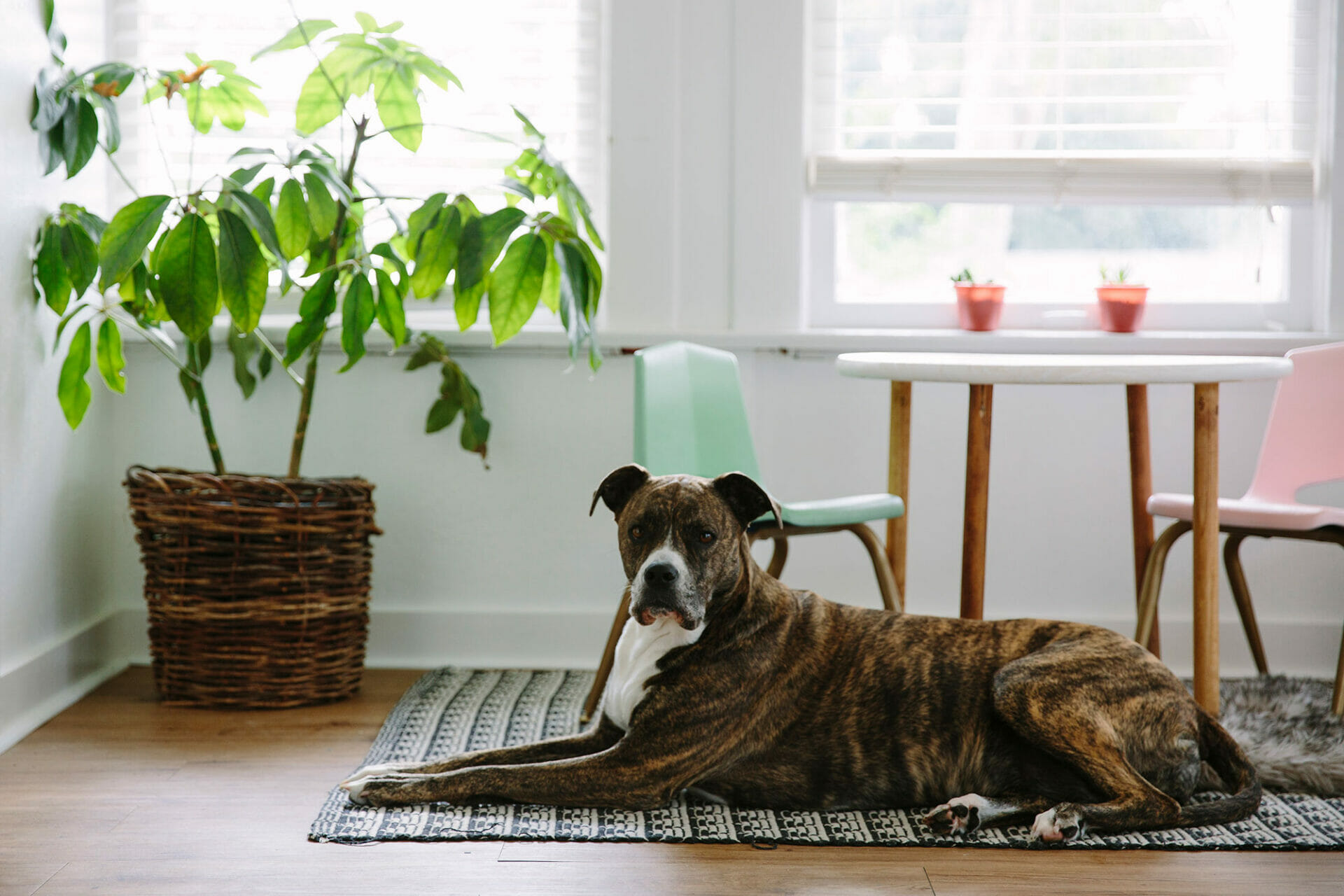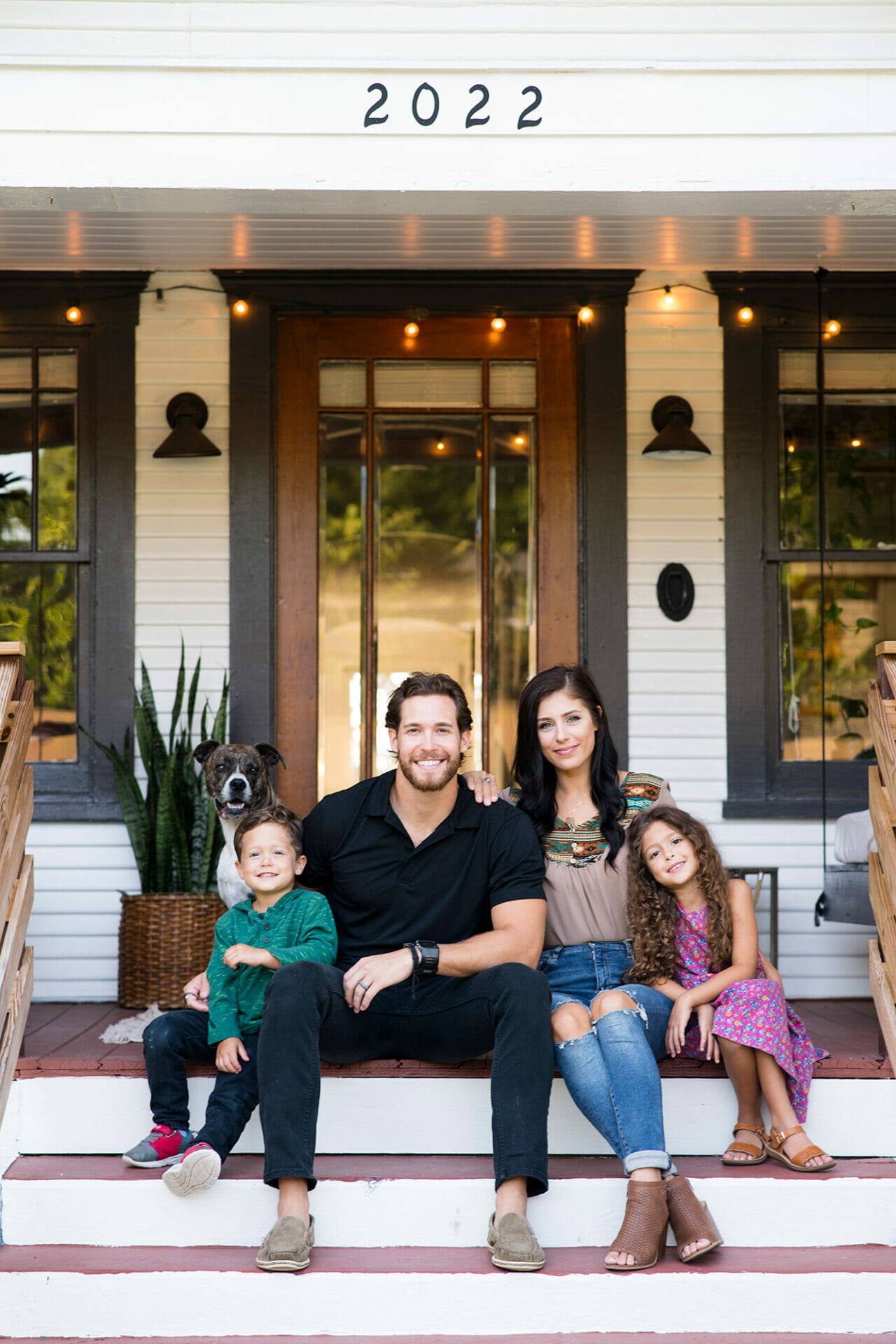Photography by: Jason Stephens
Situated amongst acres of citrus trees far removed from town was a Craftsman bungalow built in 1926 on Lake Miriam Drive. Ninety-three years later, this citrus home is now owned and cared for by Lakelanders Paul and Brooke Wilson and their two children, who carry on its story today.
Lakeland’s popular Edgewood Drive received its name because, in the original city limits, this street was the literal “edge of the woods.” But in Florida, we don’t have normal “woods” like you’d think of with fog, mist, and tall trees. We have citrus trees — a bunch of citrus trees. In a brochure mass distributed amongst northern states in 1919, Lakeland advertised its city as a place wHere “realities of life are softened, living is better, and life seems to hold more of a reward.” This reward came in the form of citrus farming and the financial benefit this could give a person.
The Social Security Administration didn’t start until 1935. So, Lakeland marketed its growing citrus industry to people who wanted to ditch the snow up north, easily acquire acres of land, and build their retirement through citrus farming. The spearhead for this initiative was land developer William Hallam, the name that graces Hallam Drive. Hallam owned 3,000 acres of what is now South Lakeland and sold citrus land for $96 per acre to people who wanted to build their retirement in sunny Florida. Not only did Hallam lead the citrus industry movement for Lakeland, he also wanted to name a piece of his land after his beloved daughter, Helen Miriam. Helen Miriam’s legacy is still remembered today through the road that runs parallel to her father’s — Lake Miriam Drive.
This is where our story begins. I had the opportunity to sell this home in 2017 to the Wilsons who continue to write this home’s story.

The Lakelander: This home sat vacant for 14 years and hadn’t been remodeled in decades. What drew you to it?
Paul Wilson: Our first home was a newer home. Our second home was built in the 1960s. And for this purchase we really wanted to try our hand at remodeling and take on a true historic home. We were a bit naive, to be honest. But we thought if it’s been done before, we can do it, too. So we went for it.
Brooke Wilson: We also loved the land. Although this home started with most likely 10 acres, the fact that we could own half an acre in such a central location is a gift.
TL: Having lived in the home, what is your favorite part about it?
BW: The kitchen is truly the heartbeat of our home. When we remodeled the kitchen (twice actually; we didn’t like it the first time), everything we took out we tried to repurpose in other ways around our home.
PW: When we raised the ceiling in the kitchen, Brooke saved the cedar beams we couldn’t keep and made our dining room table out of them and the floating shelves in our kitchen. We love that pieces of our home live on in new ways and purposes.
[modula id=”18646″]
TL: What would you say is the most charming feature of the home?
BW: The classic American Craftsman archway with the built-in columns from our living room into our dining room is my favorite piece of architecture in our home.
PW: Our master bathroom used to be part of the wrap-around porch. When enclosed and converted to our bathroom, we decided to keep the exposed backside of our fireplace chimney in our bathroom as character.

TL: How do you feel a part of the history of your home?
PW: Our bungalow was built five feet off the ground to accommodate a 15-foot water tank under our house to water citrus trees in the 1920s. That tank is still a part of the foundation of our home and, as a tribute to the history, we plan to refurbish the tank to be able to water our own trees and plants one day.
BW: The elderly man we bought the home from grew up in this home, and his parents were the second owners. We feel a part of the history because, in the same way the seller was raised here, we are now raising our two children in this home and hope for many decades of memories like he had.
TL: You remodeled this home from top to bottom. What was the scariest part of the process?
PW: Remodeling a historic home is two steps forward, one step back. We literally put on gloves every day having no idea what we would find.
BW: The unknown was the hardest part, but even with all the struggles, pain, and tears, we received so many blessings out of the process. For example, had our A/C not been a problem, we wouldn’t have raised the ceilings in the majority of the home which completely opens the space and makes our home feel bigger than it is.
TL: What is the vision of your interior design?
BW: I love the fusion of mid-century modern furniture for its minimalistic furniture and streamline style with a bohemian flair for color and texture. Through this house process, I gained so many carpentry skills. It’s scary to work on other people’s homes, but I learned and gained experience and confidence through working on my own home.
PW: What I like about our interior design is we take what people think is “throw away” or garbage furniture and, through Brooke’s vision, make it a piece of art that people admire and desire.
TL: How did you come across your furnishings?
BW: Eighty percent of our home I either built or refinished. Because our home remodel was so unpredictable financially, I had to get creative with the vision I had for the interior design. I found ways to get the look that financially worked alongside our remodel with getting handy and learning how to refinish furniture. Almost everything in our home I found on Facebook Marketplace, yard sales, and thrift stores.
[modula id=”18653″]
TL: If your house could speak, what would it say?
PW: Our house would say, “I’m now thriving again; thank you.” We took something that is almost 100 years old and gave it new life.
BW: Our house has a big personality and is definitely a girl. She requires a lot of attention but stands tall and is the life of the party. I think she would say, “Sit and stay awhile.”
TL: What advice would you give to someone thinking about owning and/or remodeling a historic home?
PW: Think, pray, and talk a lot before making the decision. Try to enjoy the chaos of the process, even if it’s grueling at times. The opportunity is a blessing.
BW: If you have a passion to do it, do it. It’s so rewarding knowing you’ve helped advance the process of history.
